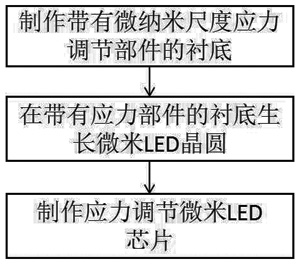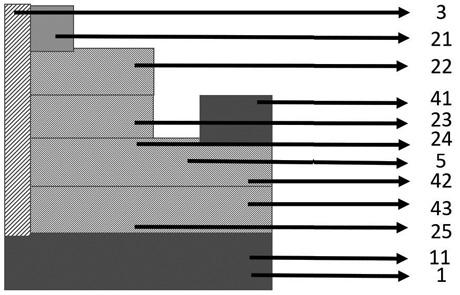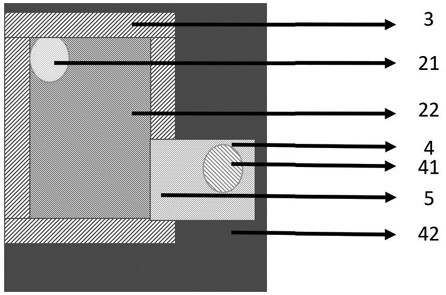Manufacturing method of stress adjusting micron LED chip
A LED chip and stress adjustment technology, applied in the field of micro-LEDs, can solve problems such as uneven current distribution of LED chips, limited improvement effect, and immature micro-LED technology, so as to avoid surface non-radiative radiation effects and serious current uniformity , to avoid the effect of the polarization effect is not obvious
- Summary
- Abstract
- Description
- Claims
- Application Information
AI Technical Summary
Problems solved by technology
Method used
Image
Examples
Embodiment Construction
[0031] In order to better understand the purpose and function of the present invention, a method for manufacturing stress-regulated micro-LED chips of the present invention will be further described in detail below in conjunction with the accompanying drawings.
[0032] according to figure 1 , a method for manufacturing a stress-regulated micro-LED chip according to an embodiment of the present invention includes:
[0033] Step 111: Fabricate the substrate 1 with the micro-nano scale stress adjustment component 3;
[0034] Step 112: growing micro-LED wafers on the substrate with stress components;
[0035] Step 113: Fabricate stress-regulated micro-LED chips.
[0036] Furthermore, the area of the micro-nano-scale stress adjustment component 3 is less than or equal to 50000µm 2 ; The production process of the micro-nano scale stress adjustment component 3 includes:
[0037] Step 1111: Depositing a stress-adjusting material on the substrate;
[0038] Step 1112:
[0039] ...
PUM
| Property | Measurement | Unit |
|---|---|---|
| area | aaaaa | aaaaa |
Abstract
Description
Claims
Application Information
 Login to View More
Login to View More - R&D
- Intellectual Property
- Life Sciences
- Materials
- Tech Scout
- Unparalleled Data Quality
- Higher Quality Content
- 60% Fewer Hallucinations
Browse by: Latest US Patents, China's latest patents, Technical Efficacy Thesaurus, Application Domain, Technology Topic, Popular Technical Reports.
© 2025 PatSnap. All rights reserved.Legal|Privacy policy|Modern Slavery Act Transparency Statement|Sitemap|About US| Contact US: help@patsnap.com



